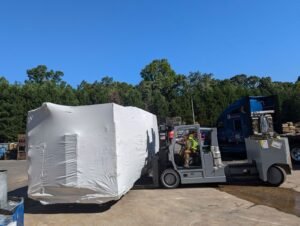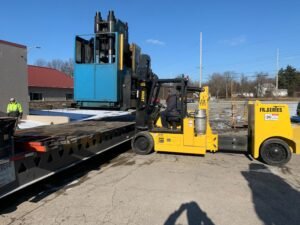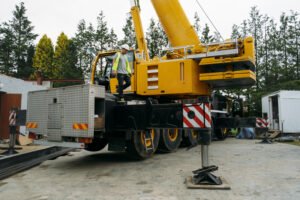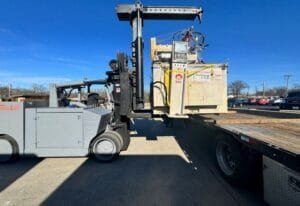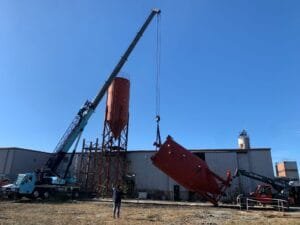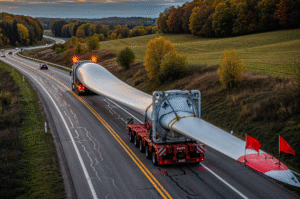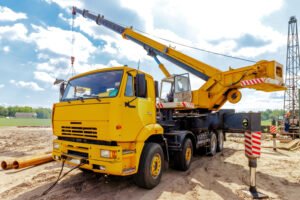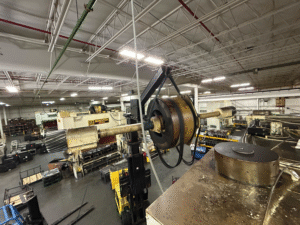Moving heavy equipment is a complex and demanding task that requires precision, planning, and expertise. Whether you’re relocating construction machinery, industrial equipment, or other large items, avoiding common mistakes can save time, money, and potential damage. In this article, we’ll delve into the top five mistakes to avoid when moving heavy equipment, ensuring a safe and efficient transportation process.
Inadequate Planning and Preparation
The foundation of any successful heavy equipment move is thorough planning and preparation. Without a detailed plan, the likelihood of encountering unforeseen challenges increases significantly. Inadequate planning can lead to delays, unexpected costs, and even accidents.
Key Considerations for Planning
- Site Assessment: Before moving any heavy equipment, it’s crucial to assess both the origin and destination sites. This includes evaluating the terrain, access points, and potential obstacles. Understanding the layout of both locations helps in determining the best route and the type of equipment needed for the move.
- Equipment Specifications: Knowing the exact dimensions, weight, and special requirements of the equipment being moved is essential. This information helps in selecting the right transportation method and ensures that the equipment will fit through all necessary access points.
- Permits and Regulations: Depending on the size and weight of the equipment, special permits may be required for transportation, especially for interstate or cross-country moves. Failing to secure the necessary permits can result in fines, legal issues, and delays.
- Contingency Planning: Even with the best planning, unexpected issues can arise. Having a contingency plan in place, such as alternative routes or backup equipment, can help mitigate potential problems.
Common Planning Mistakes to Avoid
- Underestimating the Complexity: Moving heavy equipment is not a simple task. Underestimating the complexity can lead to oversights in planning, resulting in costly errors.
- Ignoring Weather Conditions: Weather can have a significant impact on the safety and efficiency of heavy equipment moves. Failing to account for weather conditions, such as rain, snow, or extreme heat, can cause delays and increase the risk of accidents.
- Overlooking Communication: Clear communication between all parties involved in the move is crucial. This includes the moving company, site managers, and any third-party contractors. Miscommunication can lead to misunderstandings, delays, and mistakes during the move.
Choosing the Wrong Transportation Method
Understanding Transportation Options
Selecting the appropriate transportation method is a critical step in moving heavy equipment. The wrong choice can result in damage to the equipment, increased costs, and logistical challenges.
Common Transportation Methods
- Flatbed Trucks: Ideal for equipment that can be loaded and secured on an open platform. Flatbeds are versatile and can handle a variety of equipment sizes and weights.
- Lowboy Trailers: Designed for transporting heavy and oversized equipment, lowboy trailers have a lower deck height, making them suitable for tall machinery that would otherwise exceed height restrictions.
- Step Deck Trailers: These trailers have a lower deck and an upper deck, allowing for the transportation of equipment that requires more clearance height.
- Specialized Trailers: For extremely heavy or oddly shaped equipment, specialized trailers such as extendable trailers, multi-axle trailers, or modular trailers may be necessary.
Factors to Consider When Choosing a Transportation Method
- Equipment Size and Weight: The transportation method must be capable of safely handling the equipment’s dimensions and weight.
- Route Restrictions: Some routes may have weight or height restrictions, necessitating the use of certain types of trailers.
- Loading and Unloading Requirements: Consider how the equipment will be loaded and unloaded. Certain trailers may require cranes, forklifts, or other specialized equipment.
- Cost: The transportation method should align with your budget while ensuring the safety and security of the equipment.
Common Transportation Mistakes to Avoid
- Overloading Trailers: Exceeding the weight capacity of the trailer can lead to equipment damage, trailer failure, and legal penalties.
- Inadequate Securing of Equipment: Failing to properly secure equipment can result in shifting during transit, causing damage to the machinery or the trailer.
- Ignoring Route Planning: Not considering route restrictions can lead to detours, delays, and additional costs.
Failing to Secure Proper Permits and Insurance
Transporting heavy equipment often requires special permits, especially for oversized or overweight loads. These permits are necessary to ensure that the equipment can be transported safely and legally on public roads.
Types of Permits Required
- Oversize Load Permits: Required when the equipment exceeds the standard legal size or weight limits.
- Overweight Load Permits: Necessary when the equipment’s weight exceeds the legal limits for the chosen transportation route.
- Special Route Permits: Some routes, such as bridges or tunnels, may have additional restrictions that require special permits.
The Role of Insurance
Insurance is another critical component of heavy equipment transportation. Accidents, theft, and damage can occur during the move, and having the right insurance coverage protects against financial loss.
Common Mistakes Related to Permits and Insurance
- Overlooking Permit Requirements: Failing to obtain the necessary permits can result in fines, delays, and even the impounding of equipment.
- Inadequate Insurance Coverage: Not having sufficient insurance coverage can leave you vulnerable to significant financial losses in the event of an accident or damage.
- Assuming the Moving Company Has Full Coverage: While most professional movers carry insurance, it’s essential to verify the coverage details and ensure it meets your specific needs.
Improper Loading and Securing of Equipment
Improper loading and securing of heavy equipment can lead to a host of issues, including equipment damage, accidents, and delays. Ensuring that the equipment is loaded correctly is crucial for a successful move.
Best Practices for Loading Heavy Equipment
- Use the Right Equipment: Depending on the weight and size of the equipment, specialized loading equipment such as cranes, forklifts, or winches may be necessary.
- Follow Manufacturer Guidelines: Always refer to the manufacturer’s guidelines for loading and securing the equipment. These guidelines provide specific instructions on the safest way to handle the equipment.
- Balance the Load: Ensure that the equipment is evenly distributed on the trailer to avoid overloading one side. An unbalanced load can cause the trailer to tip or sway during transit.
- Secure the Equipment Properly: Use high-quality chains, straps, and binders to secure the equipment to the trailer. The equipment should be immobilized to prevent any movement during transit.
Common Loading Mistakes to Avoid
- Overloading the Trailer: Exceeding the trailer’s weight capacity can cause tire blowouts, axle damage, and other serious issues.
- Inadequate Securing: Failing to use the appropriate securing devices or methods can result in equipment shifting or falling off the trailer.
- Ignoring Weight Distribution: Not properly distributing the weight of the equipment can lead to dangerous driving conditions and increased wear on the trailer.
Underestimating the Importance of Professional Expertise
Heavy equipment moving is not a task that should be taken lightly. It requires specialized knowledge, experience, and equipment to execute safely and efficiently. Attempting to move heavy equipment without professional assistance can lead to disastrous results.
The Role of Professional Movers
- Expertise in Handling Equipment: Professional movers have extensive experience in handling a wide range of heavy equipment. They understand the nuances of different machinery and can ensure it is transported safely.
- Access to Specialized Equipment: Professional movers have access to the necessary equipment, such as specialized trailers, cranes, and rigging gear, to handle the move.
- Knowledge of Regulations: Experienced movers are familiar with the legal requirements and permits needed for transporting heavy equipment. They can navigate the complexities of obtaining permits and ensuring compliance with regulations.
- Risk Mitigation: Professional movers are trained to anticipate and mitigate risks associated with heavy equipment moving. This includes everything from securing the equipment to planning the safest route.
Common Mistakes When Relying on Non-Professionals
- Lack of Experience: Without the proper experience, it’s easy to make critical mistakes during the move, such as improper loading, securing, or route planning.
- Inadequate Equipment: Non-professionals may not have access to the specialized equipment needed to move heavy machinery safely.
- Increased Risk of Accidents: The lack of professional expertise increases the risk of accidents, damage to the equipment, and injuries to personnel.
Key Takeaways for a Successful Heavy Equipment Move
Moving heavy equipment is a challenging and intricate process that requires careful planning, the right equipment, and professional expertise. By avoiding the common heavy equipment moving mistakes outlined in this article, you can ensure a successful and safe relocation of your heavy machinery.
Remember, the key to a successful heavy equipment move lies in thorough planning, choosing the right transportation method, securing proper permits and insurance, loading and securing the equipment correctly, and relying on professional expertise. By paying attention to these critical areas, you can avoid costly mistakes and ensure your equipment arrives at its destination safely and on time. Alltracon‘s team of experts can guide you through each step of the process to ensure a seamless and efficient relocation. Contact us today to discuss how we can support your next heavy equipment move!

